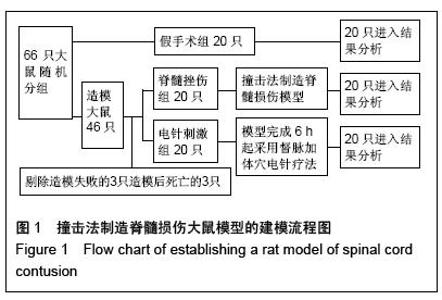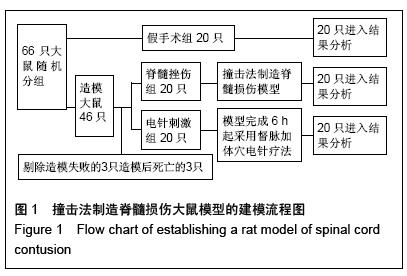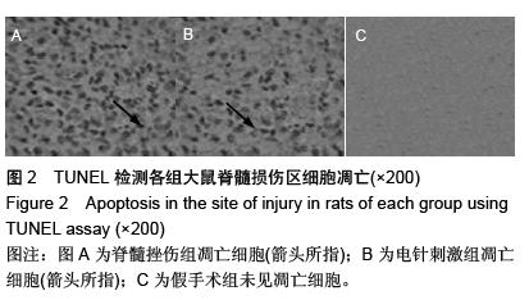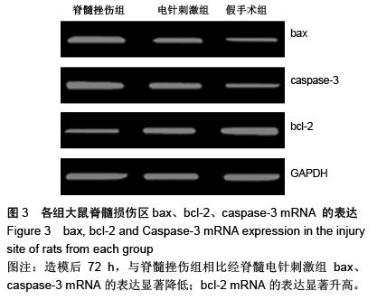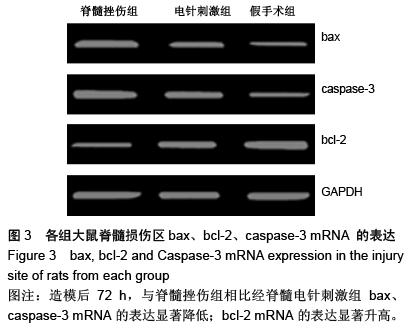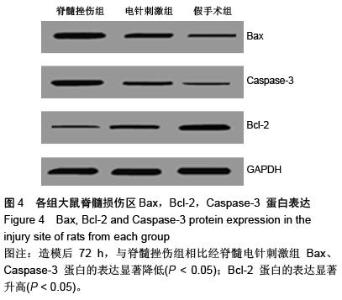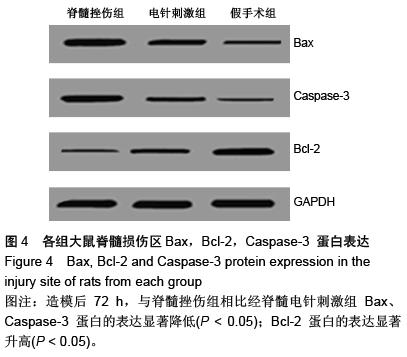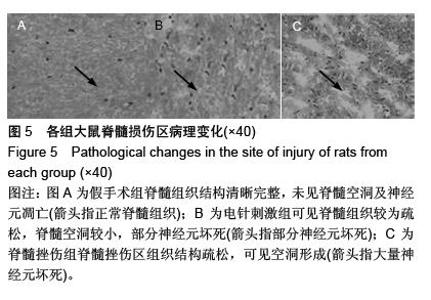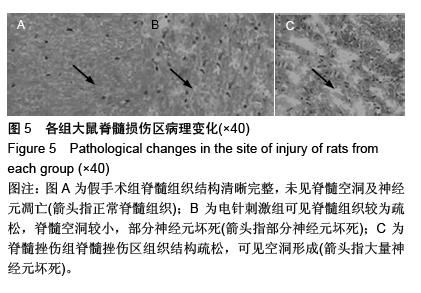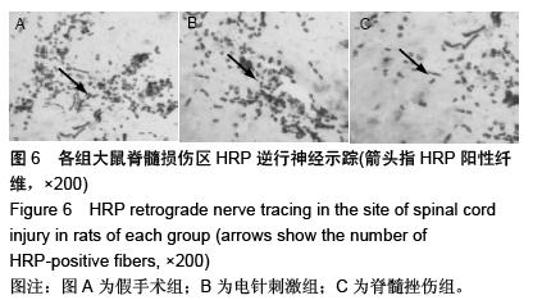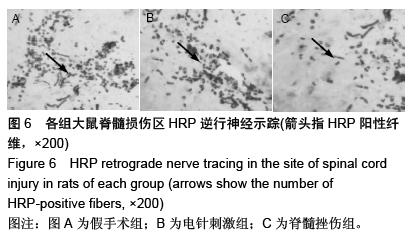| [1] 李惠兰,刘兰群,卢虎英,等.减重步行训练和督脉电针对脊髓损伤大鼠神经营养因子及生长相关蛋白-43.表达的影响[J].中国康复理论与实践,2012,18(10):930-933.
[2] Chen K,Cheng HH,Zhou RJ,et al.Molecular mechanisms and functions of autophagy and the ubiquitin-proteasome pathway. Yi Chuan.2012;34(1):5-18.
[3] Erik Björklund,Eva Lindberg,Malin Rundgren,et al.Ischaemic brain damage after cardiac arrest and induced hypothermia–a systematic description of selective eosinophilic neuronal death.A neuropathologic study of 23 patients.Resuscitation. 2014;85(4):527-532.
[4] 宋琳,李晓宁,王宁,等.电针对大鼠脊髓损伤后细胞凋亡PARP-1裂解片段表达的影响[J].中医药学报,2011,39(2):86-88.
[5] Oyinbo CA.Secondary injury mechanisms in traumatic spinal cord injury:a nugget of this multiply cascade.Acta Neurobiol Exp(Wars).2011;71(2):281-299.
[6] 孙为增,王新家,林丽艳,等.电针对急性脊链损伤大鼠白细胞介素-1 B表达变化的影响[J].中国康复理论与实践,2009,15(3): 208-210.
[7] Chiu M,Tardito S,Barilli A.Glutamine stimulates mTORC I independent of the cell content ofessential amino acids.Amino Acids.2012;43(6):2561-2567.
[8] Tanaka T,Mayuyama D,Takeda M,et al.Alzheimer disease and tau protein.Rinsho Shinkeigaku.2012;52(11):1171-1173.
[9] Pallini R, Vitiani LR, Bez A, et al. Homologous transplantation of neural stem cells to the injured spinal cord of mice. Neurosurgery.2005;57:1014-1025.
[10] 陈庆林,陈勤,金蓓蓓,等.远志皂苷对AD小鼠学习记忆能力及中枢胆碱能系统标志酶活性的影响[J].中药药理与临床,201l,27(3): 33-36.
[11] Xie Y.Structure,assembly and homeostatic regulation ofthe 26S proteasome.J Mol Cell Biol.2010;2(6):308-317.
[12] Bulic B, Pickhardt B, Mandeldow EM, et al. Development of Tau aggregation inhibitors for Alzheimer’s Disease. Medicinal Chemistry.2009;48:1740-1752.
[13] Williamson A,WemerA,Rape M,et al.The Colossus of ubiquitylation:decrypting a cellular code.Mol Cell.2013;49(4): 591-600.
[14] Hegde AN,Upadhya SC.Role ofubiquitin-proteasome- mediated proteolysis in nervous system disease.Biochim BiophysActa.2011;1809(2):128-140.
[15] Ariake K, Ohtsuka H, Motoi F,et al.GCF2/LRRFIP1 promotes colorectal cancer metastasis and liver invasion through integrin-dependent RhoA activation.Cancer Letters.2012; 325(1):99-107.
[16] Pearse DD, Sanchez AR, Pereira FC,et al.Transplantation of Schwann cells and/or olfactory ensheathing glia into the contused spinal cord: Survival, migration, axon association, and functional recovery.Glia.2007;55(9):976-1000.
[17] Sanli AM, Serbes G, Sargon MF,et a1.Methothrexate attenuates early neutrophil infiltration and the associated lipid peroxidation in the injured spinal cord but does not induce neurotoxicity in the uninjured spinal cord in rats.Aeta Neurochirurgica.2012;154(6):1045-1054.
[18] 李丽,周霞,杨军,等.电针联合康复训练对脊髓损伤大鼠脑源性神经营养因子及其受体酪氨酸激酶B表达的影响[J].中华物理医学与康复杂志,2011,33(12):61-63.
[19] Wu MF,Zhang SQ,Liu JB,et al.Neuroprotective effects of electroacupuncture on early- and late-stage spinal cord injury. Neural Regen Res. 2015; 10(10): 1628-1634.
[20] Geng X,Sun T,Li JH,et al.Electroacupuncture in the repair of spinal cord injury: inhibiting the Notch signaling pathway and promoting neural stem cell proliferation. Neural Regen Res. 2015; 10(3): 394-403.
[21] Huang SF,Ding Y,Ruan JW.An experimental electro-acupuncture study in treatment of the rat demyelinated spinal cord injury induced by ethidium bromide. Neurosci Res. 2011; 70(3):294-304.
[22] Yang JH,Lv JG,Wang H,et al.Electroacupuncture promotes the recovery of motor neuron function in the anterior horn of the injured spinal cord. Neural Regen Res. 2015; 10(12): 2033-2039.
[23] Rodriguez KA,Gaczynska M,Osmulski PA,et al.Molecular mechanisms of proteasome plasticity in aging.MechAgeing Dev.2010;131(2):144-155.
[24] 李晓宁,田旭升,刘芳,等.电针对大鼠脊髓损伤后细胞凋亡相关基因Caspase -9的研究[J].中医药信息,2009,26(1):61-63.
[25] Sun T, Cui CB, Luo JG,et al.Effect of electroacupuncture on the expression of spinal glial fibrillary acidic protein, tumor necrosis factor-alpha and interleukin- 1beta in chronic neuropathic pain rats.Zhen Ci Yan Jiu.2010;35(1):12-16. |
